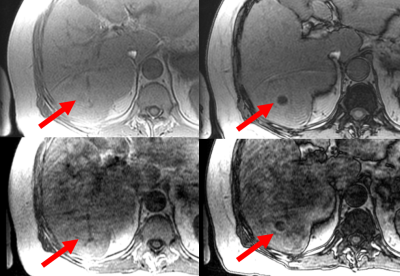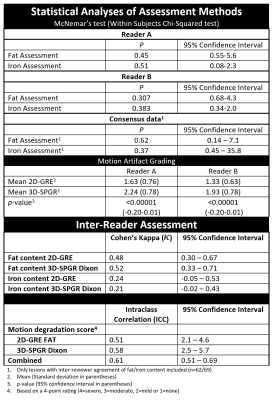Bradley C Monteforte1, Ali Agely1, Manoj Mathew1, Pejman Ghanouni1, and Ryan L Brunsing1
1Radiology, Stanford University, Palo Alto, CA, United States
1Radiology, Stanford University, Palo Alto, CA, United States
We found no difference in performance between dedicated 2D-GRE and 3D-SPGR Dixon sequences for the detection of fat or iron content in liver lesions.

Figure 2. In-phase 2D-GRE
(top left), opposed-phase 2D-GRE (top right), in-phase 3D-SPGR (bottom left),
opposed-phase 3D-SPGR (bottom right). The right hepatic lobe lesion
(arrows) demonstrates signal loss on opposed-phase images with both sequences, as rated
by both readers. Respiratory motion was scored mild and severe by both readers for the 2D-GRE and 3D-SPGR images, respectively. Of note, each pair of IOP
images was assessed at different time points within the full slate of their
respective sequences.

